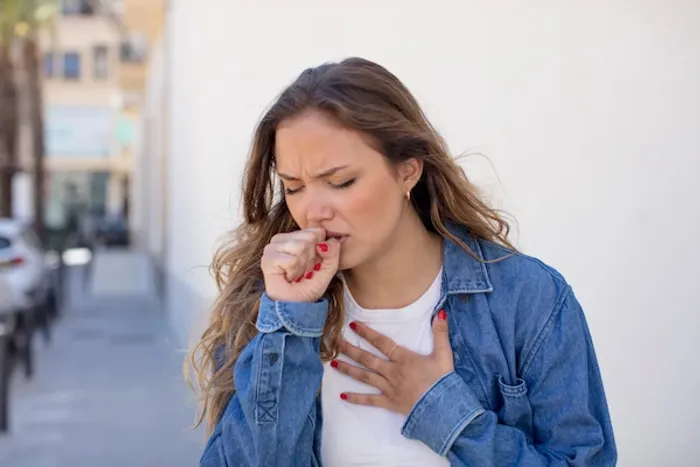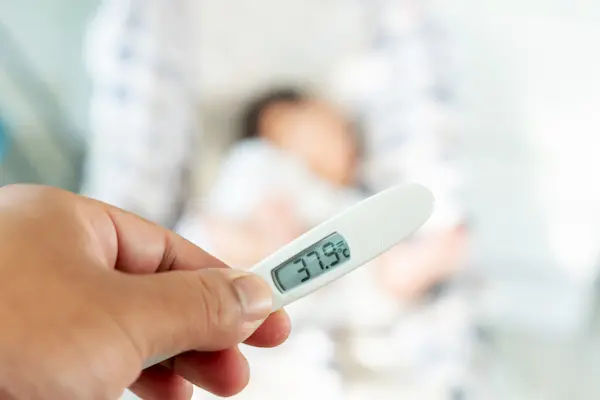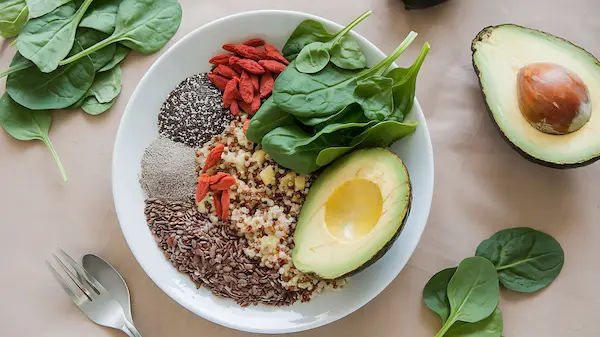Monsoon Illness Prevention: Signs, Tips And Care
Learn practical monsoon illness prevention tips: recognise early signs, prevent mosquito-borne and waterborne diseases, maintain safe food, water, and indoor hygiene, and protect children, older adults, and chronic patients.

Written by Dr. J T Hema Pratima
Reviewed by Dr. Dhankecha Mayank Dineshbhai MBBS
Last updated on 27th Oct, 2025

Introduction
When the rains arrive, they bring relief from heat—and a rise in health risks you can actually prevent. The monsoon season changes our environment in ways that favor germs and mosquitoes, from standing water and floods to crowded indoor spaces. That’s why monsoon illness prevention should sit at the top of every family’s rainy-season checklist. In this guide, you’ll learn how to spot early signs of common monsoon illness, what practical steps truly reduce your risk, and how to keep safe water, food, and air in your home. We’ll also cover flood-related hazards, tailored advice for kids and older adults, and when to get tests or consult a doctor. Wherever you live, these prevention strategies are easy to adapt and make a real difference. Let’s turn this monsoon into a season of preparedness—not panic.
Why Monsoon Increases Disease Risk
Heavy rains transform our surroundings. Puddles, water tanks, and clogged drains become breeding sites for Aedes and Anopheles mosquitoes that spread dengue, chikungunya, and malaria. Mosquitoes can breed in as little as a bottle cap of water, and eggs can survive dry spells waiting for the next shower. Floods disrupt sanitation, allowing sewage to mix with drinking water sources and raising risks of diarrhoeal diseases like cholera and typhoid. Power outages and supply interruptions can make it harder to refrigerate food safely or maintain consistent water treatment at home.
Indoors, increased humidity encourages mold growth on damp walls and furnishings after leaks or flooding; mold spores can worsen allergy and asthma symptoms, especially among children and older adults. People also spend more time indoors during storms, which can raise transmission of respiratory infections like seasonal influenza.
- Unique insight: Think of monsoon prevention as layered protection. No single measure is perfect. But stacking layers—eliminate standing water, use effective repellents, ensure safe water and food, and maintain indoor air quality—reduces risk dramatically. This “Swiss cheese” approach makes your home far safer than relying on any one tactic.
Consult Top Specialists
Early Signs to Watch: Recognising Monsoon Illnesses
Dengue and malaria clues you shouldn’t ignore
- Dengue often starts with sudden high fever, severe headache, eye pain, muscle and joint pains, nausea, and sometimes a rash. Warning signs include persistent vomiting, severe abdominal pain, bleeding gums or nose, or lethargy—seek care urgently.
- Malaria typically causes fever with chills and sweats, fatigue, and headaches. Fever may come in cycles, but early on it can be irregular. Any fever in a malaria-risk area merits testing.
Waterborne infections: gastroenteritis, cholera, typhoid
- Gastroenteritis features diarrhea, vomiting, abdominal cramps, and sometimes fever. Dehydration risk rises quickly in children and older adults.
- Cholera presents with sudden, profuse “rice-water” stools and can cause severe dehydration—this is a medical emergency.
- Typhoid can cause sustained fever, abdominal discomfort, headache, and constipation or diarrhea. Seek testing and treatment guidance early.
Leptospirosis, skin, and eye infections after floods
- Leptospirosis (from exposure to urine-contaminated floodwater) often causes fever, headache, muscle aches (especially calves), and red eyes; severe disease can involve jaundice and kidney/lung issues.
- Skin infections: soaked feet and minor wounds can get infected; look for redness, warmth, pus, or spreading pain.
- Conjunctivitis: red, itchy, watery eyes; maintain hand/eye hygiene.
Red flags requiring urgent medical attention
- Any fever with bleeding, breathlessness, confusion, seizures, jaundice, severe abdominal pain, or signs of dehydration (very dry mouth, minimal urine, dizziness).
- In children: lethargy, sunken eyes, fast breathing, persistent vomiting.
- If symptoms persist beyond two days or worsen, consult a doctor online with Apollo 24|7 for further evaluation—earlier diagnosis improves outcomes.
Mosquito-Borne Illness Prevention (Dengue, Malaria, Chikungunya)
Eliminate mosquito habitats at home and work
- Weekly “10-minute patrol”: empty, scrub, and dry containers that hold water—plant trays, rooftop tanks, coolers, buckets, tires, AC drip trays. Cover overhead tanks and cisterns tightly.
- Fix leaky taps and drain clogs; ensure proper slope on balconies and terraces.
- Use larvicidal measures only as advised locally; community vector-control teams often treat high-risk sites.
Personal protection: repellents, clothing, nets, and screens
- Use EPA- or national authority–approved repellents with DEET (20–30%), picaridin (20%), IR3535, or Oil of Lemon Eucalyptus (PMD) on exposed skin; reapply per label, especially after sweating or rain. For children, follow age-specific guidance on product labels.
- Wear long sleeves and pants in light colors, especially during dawn and dusk. Treat clothing with permethrin where available (do not apply permethrin to skin).
- Install window/door screens and use bed nets (insecticide-treated nets where malaria risk exists). Use fans; increased airflow reduces mosquito landings.
Community action: neighborhood clean-ups and reporting
- Organise weekend clean-ups to remove trash that traps water; coordinate with local authorities for fogging or larvicide in outbreak zones.
- Report unusual mosquito swarms or blocked drains to civic bodies.
Unique insight: Create a “standing water map” of your home and building that lists every possible container and its weekly cleaning schedule. This concrete checklist boosts compliance far more than a generic reminder.
Safe Water, Food, and Kitchen Hygiene During Monsoon
Drinking water safety: boiling, chlorination, and storage
- If water quality is uncertain, boil for at least one minute and cool in covered containers. Alternatively, use certified filters or chlorination as directed.
- Store drinking water in clean, covered containers with narrow mouths; use a ladle rather than dipping hands.
Food handling, cooking temperatures, and street food cautions
- Follow WHO’s Five Keys to Safer Food: keep clean; separate raw and cooked; cook thoroughly; keep food at safe temperatures; use safe water and raw materials.
- Avoid cut fruits and salads from street vendors; choose hot, freshly cooked foods served steaming. Reheat leftovers to boiling.
- Ensure milk and dairy are pasteurized or boiled; refrigerate leftovers promptly if power remains stable.
Hand hygiene routines that actually work
- Wash hands with soap and water for 20 seconds before cooking/eating and after using the toilet or handling diapers. Keep alcohol-based sanitizer (60%+) for backup.
Designate a “wet entry” zone at home with a towel and soap for quick wash-ups after returning from rain.
DIY ORS and hydration basics for mild dehydration
Oral rehydration solution: mix 6 level teaspoons of sugar and 0.5 level teaspoon of salt in 1 liter of clean water. Use commercially prepared ORS if available. Seek care for moderate/severe dehydration, especially in children and older adults.
Unique insight: Create a rain-day kitchen plan—recipes that use shelf-stable ingredients and require minimal washing. This reduces dependence on potentially unsafe fresh produce during floods.
Floodwater Hazards and Leptospirosis Prevention
Protective footwear, wound care, and pet/rodent control
- Avoid wading in floodwater; if unavoidable, wear closed, waterproof footwear and protective clothing. Cover cuts with waterproof dressings. Shower and wash thoroughly after exposure.
- Keep pets vaccinated and away from contaminated water. Secure garbage to deter rodents; seal cracks and gaps in walls.
Home cleanup: disinfecting floors, tanks, and containers
- After water recedes, discard porous items soaked by floodwater if moldy and hard to disinfect. Clean hard surfaces with detergent and water, then disinfect.
- Flush and disinfect water tanks; run taps until water clears. Replace filter cartridges if contaminated.
When prophylaxis is considered
In some outbreak settings and for specific high-risk exposures, public health teams may consider antibiotic prophylaxis for leptospirosis. Do not self-medicate; follow local health advisories. Seek medical advice promptly if you develop fever, muscle pain, or red eyes after flood exposure.
Respiratory Health in the Rains: Colds, Flu, COVID-19, and Mold
Ventilation, humidity control, and mold cleanup
- Keep indoor relative humidity ideally between 40–60%. Use exhaust fans, cross-ventilation, and dehumidifiers.
- After leaks or flooding, dry all wet materials within 24–48 hours to prevent mold. Clean small mold patches with detergent and water; wear gloves and a mask. Large or persistent mold may need professional help.
- Avoid burning mosquito coils indoors in poorly ventilated rooms.
Vaccination updates; masks in crowded indoor spaces
- Seasonal influenza vaccination reduces flu risk and complications. Discuss timing with your doctor.
- In crowded indoor settings during outbreaks, wearing a well-fitting mask can reduce respiratory infection transmission.
Chronic lung disease tips
- Keep rescue inhalers accessible and dry; have an updated action plan. Dampness and mold can trigger symptoms.
Unique insight: Use a low-cost digital hygrometer to monitor humidity. Seeing the number helps take timely action before mold develops.
Tailored Advice: Children, Older Adults, Pregnancy, and Chronic Illness
Kids’ hygiene routines and bite prevention
- Teach “wash on arrival” routines after school. Pack sanitizer and a clean napkin. Use child-appropriate repellents; dress children in light, long-sleeved clothing.
- For toddlers, cover open water buckets and keep coolers out of reach.
Elderly and pregnant individuals
- Choose safe water and freshly cooked foods; avoid unnecessary travel in flood-prone areas. Keep a list of medications and allergies handy.
- Discuss flu and other recommended vaccines with your healthcare provider.
Diabetes, heart, kidney patients
- Store medicines in waterproof pouches; maintain a 2–4 week buffer where feasible.
- Watch for subtle signs of infection. If your condition does not improve, book a physical visit to a doctor with Apollo 24|7.
Unique insight: Create a family “health backup plan”—who holds extra prescriptions, nearest 24/7 pharmacy and clinic, and teleconsult access if roads are blocked.
Care Pathways: When to Seek Help, Tests, and Telehealth
First 48 hours of fever
- Start a fever diary: temperature, time, symptoms, fluids taken, urine output. Avoid NSAIDs until dengue is ruled out; use paracetamol as advised.
- Rest, hydrate, and monitor warning signs (bleeding, severe pain, drowsiness).
Common tests and home sample collection
- CBC, malaria smear/rapid test, dengue NS1, stool tests, kidney/liver tests as indicated.
- Apollo 24|7 offers convenient home collection for common tests.
Teleconsults, prescriptions, and follow-up
- If symptoms persist beyond two days, consult a doctor online with Apollo 24|7 for evaluation, testing guidance, and triage.
Unique insight: Keep a “fever go-bag” ready with ID, insurance, medications, ORS, water bottle, and a charged power bank.
Home Readiness and Community Resilience
Monsoon medicine and hygiene kit
- Thermometer, paracetamol, ORS, zinc for children, antiseptic, waterproof bandages, repellent, sanitiser, chlorine tabs/filters, masks, gloves, torch, batteries, power bank, waterproof pouches.
Neighborhood mosquito mapping and clean-water solutions
Form a resident task force: weekly inspections, drain reporting, shared tools. Promote rainwater harvesting designs with mesh and sealed storage.
Monsoon myths vs facts
- Herbal oils do not keep all mosquitoes away—DEET, picaridin, IR3535, PMD are proven.
- Antibiotics do not cure viral monsoon fevers.
- Cut fruit from street vendors may be contaminated; choose hot, cooked foods.
Conclusion
Monsoon doesn’t have to mean months of illness. With planning and the right habits, you can dramatically cut your risk—and protect vulnerable family members. Focus on basics: eliminate standing water, use proven repellents, ensure safe water and food, and keep indoor humidity under control. Recognise early signs of infection and heed red flags. Build a home readiness kit, coordinate with neighbours, and keep telehealth options handy. If symptoms persist, consult a doctor online with Apollo 24|7. This monsoon, choose prevention—and make rainy days safer for everyone.
Consult Top Specialists
Consult Top Specialists
Dr. Sujay P R
General Physician/ Internal Medicine Specialist
3 Years • MBBS
Bengaluru
PRESTIGE SHANTHINIKETAN - SOCIETY CLINIC, Bengaluru

Dr. Ms. Bhaswati
General Practitioner
30 Years • MBBS
Kolkata
BARASAT POLYCLINIC & DIAGNOSTIC CENTER, Kolkata

Dr. Kiran Macha
General Physician/ Internal Medicine Specialist
21 Years • MBBS,MD General Medicine
HYDERABAD
Sri Clinic, HYDERABAD
(100+ Patients)

Dr. Arun Kohli
General Practitioner
25 Years • MD (Physician)
New Delhi
RAINBOW WELLNESS CENTRE, New Delhi

Dr. Karan Goel
General Physician/ Internal Medicine Specialist
11 Years • MBBS, MD (Paediatrics)
Kolkata
Little Steps Clinic, Kolkata
Consult Top Specialists
Dr. Sujay P R
General Physician/ Internal Medicine Specialist
3 Years • MBBS
Bengaluru
PRESTIGE SHANTHINIKETAN - SOCIETY CLINIC, Bengaluru

Dr. Ms. Bhaswati
General Practitioner
30 Years • MBBS
Kolkata
BARASAT POLYCLINIC & DIAGNOSTIC CENTER, Kolkata

Dr. Kiran Macha
General Physician/ Internal Medicine Specialist
21 Years • MBBS,MD General Medicine
HYDERABAD
Sri Clinic, HYDERABAD
(100+ Patients)

Dr. Arun Kohli
General Practitioner
25 Years • MD (Physician)
New Delhi
RAINBOW WELLNESS CENTRE, New Delhi

Dr. Karan Goel
General Physician/ Internal Medicine Specialist
11 Years • MBBS, MD (Paediatrics)
Kolkata
Little Steps Clinic, Kolkata
More articles from General Medical Consultation
Frequently Asked Questions
How can I tell if a monsoon fever is dengue or malaria?
Dengue often causes high fever with severe headache, eye pain, body aches, and sometimes bleeding signs; malaria may have fever with chills and sweats. Only tests can confirm. Ask about a CBC, dengue NS1, and malaria smear/rapid test, and consult a doctor online with Apollo 24|7 if symptoms persist.
Is it safe to eat street food during the monsoon?
Choose hot, freshly cooked items served steaming and avoid cut fruits or salads washed in unsafe water. Following the Five Keys to Safer Food is essential.
Do herbal repellents work for mosquito-borne illness prevention?
Evidence strongly supports DEET, picaridin, IR3535, and Oil of Lemon Eucalyptus (PMD). Herbal blends without these actives may be less reliable.
What should I do if floodwater enters my home?
Avoid wading without protective footwear, discard unsafe porous items, clean with detergent, disinfect hard surfaces, and dry materials within 24–48 hours. Watch for leptospirosis symptoms and seek care if fever or muscle pains develop.
Which vaccines are recommended before monsoon?
Consider seasonal influenza vaccination for high-risk groups and review typhoid/hepatitis A with your doctor. Consult a doctor online with Apollo 24|7 for personalised advice.




